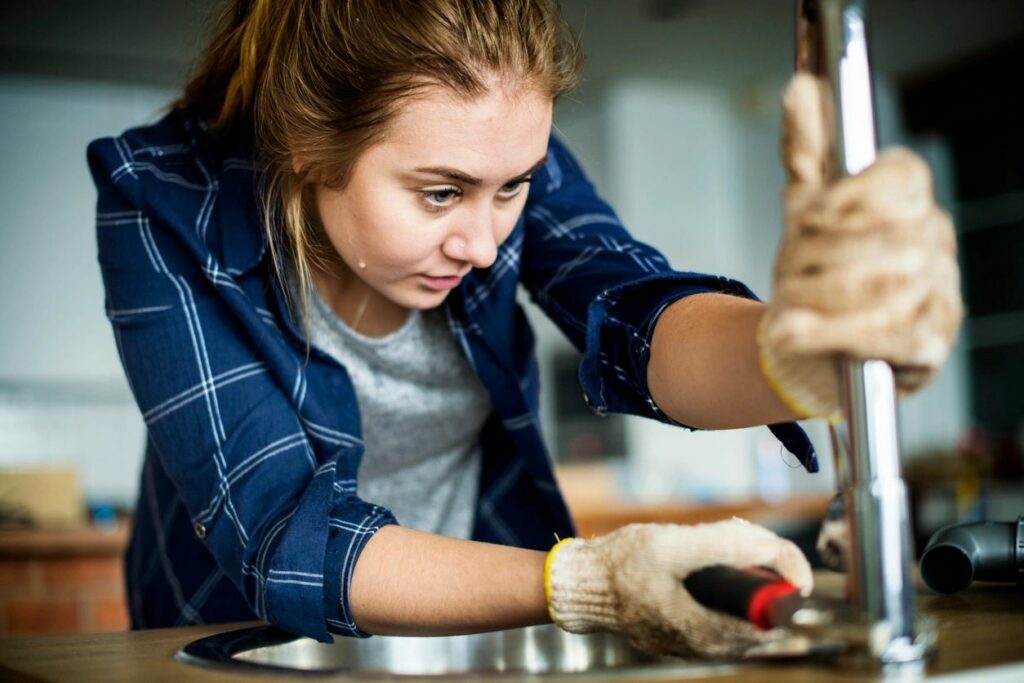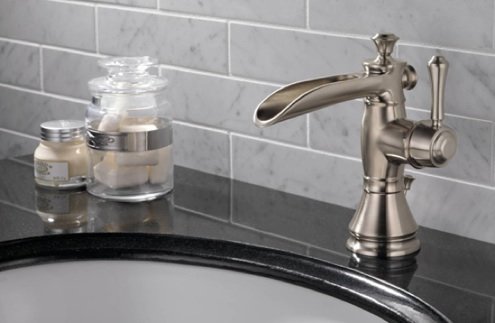How It's Essential to Resolve a Leaking Faucet
How It's Essential to Resolve a Leaking Faucet
Blog Article
Nearly everybody will have their own unique piece of advice about Should I Repair or Replace a Leaky Faucet?.

Trickling faucets may feel like a minor hassle, yet their impact goes beyond simply the aggravation of the sound. From wasting water to incurring unneeded economic expenses and health and wellness threats, overlooking a dripping faucet can result in different repercussions. In this post, we'll explore why it's vital to resolve this typical family issue promptly and effectively.
Wastage of Water
Ecological Influence
Leaking faucets contribute significantly to water wastefulness. According to the Epa (EPA), a single faucet trickling at one drip per secondly can squander greater than 3,000 gallons of water annually. This not only pressures water resources but additionally impacts communities and wild animals based on them.
Step-by-Step Overview to Taking Care Of a Dripping Tap
Tools Called for
Before trying to take care of a dripping tap, collect the required devices, including an adjustable wrench, screwdrivers, substitute parts (such as washers or cartridges), and plumber's tape.
Typical Tap Issues and Their Solutions
Identify the kind of tap and the specific issue triggering the drip. Usual troubles consist of worn-out washers, corroded valve seats, or malfunctioning O-rings. Describe supplier guidelines or online tutorials for step-by-step guidance on repairs.
Financial Costs
Increased Water Costs
Past the ecological effect, dripping faucets can blow up water costs considerably. The collected waste in time translates right into higher utility expenditures, which might have been avoided with prompt repairs.
Possible Property Damages
Furthermore, long term leaking can lead to harm to fixtures and surface areas surrounding the tap. Water accumulation can trigger discoloration, rust, and also structural concerns if left neglected, resulting in added repair expenses.
Wellness Issues
Mold And Mildew and Mold Growth
The continuous visibility of dampness from a dripping faucet produces an ideal atmosphere for mold and mold growth. These fungi not only jeopardize interior air top quality yet also position health and wellness dangers, especially for people with breathing problems or allergic reactions.
Waterborne Illness
Stationary water in leaking faucets can come to be a breeding place for germs and other microorganisms, enhancing the risk of waterborne conditions. Impurities such as Legionella germs flourish in stagnant water, possibly bring about severe diseases when ingested or breathed in.
DIY vs. Specialist Repair service
Benefits and drawbacks of Do It Yourself Repair
While some might attempt to deal with a leaking faucet themselves, do it yourself repairs feature their own collection of challenges. Without appropriate knowledge and tools, do it yourself attempts can worsen the problem or bring about incomplete fixings, prolonging the issue.
Advantages of Hiring an Expert Plumber
Employing a specialist plumber guarantees that the underlying root cause of the trickling tap is addressed efficiently. Plumbing professionals have the proficiency and equipment to diagnose and repair tap concerns effectively, conserving time and lessening the risk of additional damage.
Ecological Duty
Individual Payment to Preservation
Taking obligation for fixing leaking taps aligns with more comprehensive efforts toward water conservation and ecological sustainability. Every person's actions jointly make a substantial effect on preserving priceless sources.
Sustainable Living Practices
By focusing on punctual repair services and adopting water-saving behaviors, individuals add to sustainable living practices that profit both present and future generations.
Safety nets
Regular Upkeep Tips
To prevent leaking taps, carry out regular maintenance such as cleaning up aerators, inspecting for leakages, and replacing damaged components quickly. In addition, consider setting up water-saving tools or upgrading to much more effective components.
Importance of Prompt Repair Works
Resolving trickling faucets as soon as they're discovered stops additional water waste and prospective damages, inevitably conserving both water and cash in the future.
Influence On Home Value
Understanding of Well-Maintained Home
Preserving a residential property in good condition, consisting of attending to maintenance issues like trickling taps, improves its regarded value and desirability amongst possible purchasers or tenants.
Impact on Resale Value
Residences with well-maintained plumbing components, including taps, command higher resale worths in the realty market. Addressing trickling faucets can add to a positive impression throughout property examinations and negotiations.
Final thought
Addressing a leaking tap goes beyond simple ease; it's an important action towards conserving water, decreasing economic prices, and safeguarding health and wellness and building. Whether via do it yourself repairs or professional support, acting to take care of trickling taps is a tiny yet impactful means to advertise liable stewardship of sources and add to a much healthier, a lot more sustainable future.
How to Fix a Leaky Faucet: Step-by-Step Repair Guide
A leaky faucet may seem like a simple annoyance, but if it's not fixed promptly, that leak could cost hundreds to potentially thousands. From water damage to mold, mildew, and high water bills, even a tiny leak can be catastrophic if left unattended. Damage like this can even affect the overall value of your home, so it's important to take the right approach for leaky faucet repair. You may need the help of a plumber in some cases, but we've got a few tips you can try on how to fix a leaky faucet before calling the pros.
Four Faucet Types
When you're learning how to fix a leaky faucet, the first step is knowing what kind of faucet you're working with! There are four common types.
Cartridge Faucets
Cartridge faucets come in one- or two-handled varieties. In one-handled cartridge faucets, hot and cold water combines in a single cartridge. In the two-handled versions, hot and cold water are controlled separately and mixed in the faucet.
Ball Faucets
Ball faucets have a single lever you push up and down to adjust the pressure and rotate to change the temperature. A slotted metal ball controls the amount of water allowed into the spout.
Compression Washer Faucets
They're the oldest type of faucet, but they're still used in many homes — especially older ones. Compression faucets have two separate handles that, when turned, raise or lower the washer that seals a water valve. This valve stops water from flowing through the faucet when it is turned off.
Disc Faucets
Disc faucets rarely need to be repaired due to their maintenance-free design. The water flow is controlled by two discs — the upper one raises and lowers against a fixed lower disc, creating a watertight seal. If your disc faucet starts leaking, you may need to replace the seals or clean residue buildup from the inlets.
Fixing a Leaky Faucet
Step 1: Turn Off the Water
Whether you're learning how to fix a leaky bathtub faucet or how to fix a leaky kitchen faucet, always turn off the water supply to your working area when you're fixing a leak. The last thing you want is a flood added to your list of things to fix.
Look for the shutoff valves below your sink or around the tub and turn them clockwise to stop the water flow. If your faucet doesn't have shutoff valves, you may need to turn off the water for the whole house. Check to make sure it's off by turning the faucet on. If nothing comes out, you're ready to start the repair.
Step 2: Take Apart the Faucet
How you disassemble your faucet depends on the type of fixture you have. You can use a flathead screwdriver to remove the caps on top of the handle or handles for cartridge and compression faucets. Inside, you should see handle screws. Unscrew these with a screwdriver to remove the handle.
Disc- and ball-style faucets will typically have an inlet screw near the handle, and removing that will reveal the interior of the faucet.
Detach the Valve Stem
For cartridge- and compression-style faucets, you'll see the inner valve stem or cartridge once you remove the faucet handles. If you have a compression faucet, unscrew the brass valve stem. If you have a cartridge faucet, pull out the cartridge. If your cartridge has been in place for a while, it may require some tools or extra force to remove it due to mineral deposits.
Examine and Replace Parts
Once you've removed the parts, check them out to confirm what needs to be replaced. You may see corroded rubber washers, O-rings, stems, or cartridges. On a ball-style faucet, check the seats and springs for damage.
If you need to repair a leaky disc faucet, check the inlet and seals on the lower disc.
Once you determine what parts must be replaced, visit your local hardware store. Bring the damaged parts with you to ensure you can purchase the correct components to replace them.
Clean Valves and Faucet Cavity
If you've removed a stem or cartridge, you may notice mineral buildup in the faucet's threads. Use white vinegar to clean the valve seat by soaking it for a few minutes, then scrub it away with a soft toothbrush and rinse with warm water. You can also clean the interior of the faucet in the same way.
Reassemble the Faucet
Once your faucet is cleaned and the required parts have been replaced, it's time to reassemble it. Put the pieces back together and slowly turn the water supply back on. Doing this slowly is crucial because too much initial water pressure can damage the new hardware you've just installed.
https://homewarranty.firstam.com/blog/how-to-fix-leaky-faucet

I was brought to that editorial on Water Dripping from Faucet: Why and How to Fix through an associate on another blog. Are you aware of anybody else who is fascinated about Why Is It Important To Fix Your Leaking Tap/Faucet?? Take a moment to share it. Many thanks for your time. Kindly check our blog back soon.
Report this page